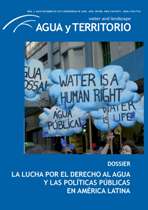Elementos para una evaluación crítica del programa brasileño Un Millón de Cisternas Rurales - P1MC
DOI:
https://doi.org/10.17561/at.v1i2.1345Resumen
Desde el cuestionamiento de las acciones y las perspectivas del programa Un Millón de Cisternas Rurales (P1MC) y del trabajo de la red Articulación en el Semiárido Brasileño (ASA), con base en la evidencia empírica, construida a partir de un estudio comparativo de casos, y un marco teórico, este estudio identifica las tensiones entre las concepciones y prácticas de ese programa y presenta una agenda para la discusión. Se pondera que en la dimensión tecnológica del servicio, el programa cumple con sus propósitos inmediatos. No obstante, en la dimensión ciudadana pedagógica, hay síntomas que indican un vaciamiento progresivo de la propuesta
Descargas
Descargas
Publicado
Número
Sección
Licencia
© Universidad de Jaén
Los originales publicados en las ediciones impresa y electrónica de esta Revista son propiedad de la Universidad de Jaén siendo necesario citar la procedencia en cualquier reproducción parcial o total.
Salvo indicación contraria, todos los contenidos de la edición electrónica se distribuyen bajo una licencia de uso y distribución “Creative Commons Reconocimiento 4.0 España” (CC-by). Puede consultar desde aquí la versión informativa y el texto legal de la licencia. Esta circunstancia ha de hacerse constar expresamente de esta forma cuando sea necesario.














